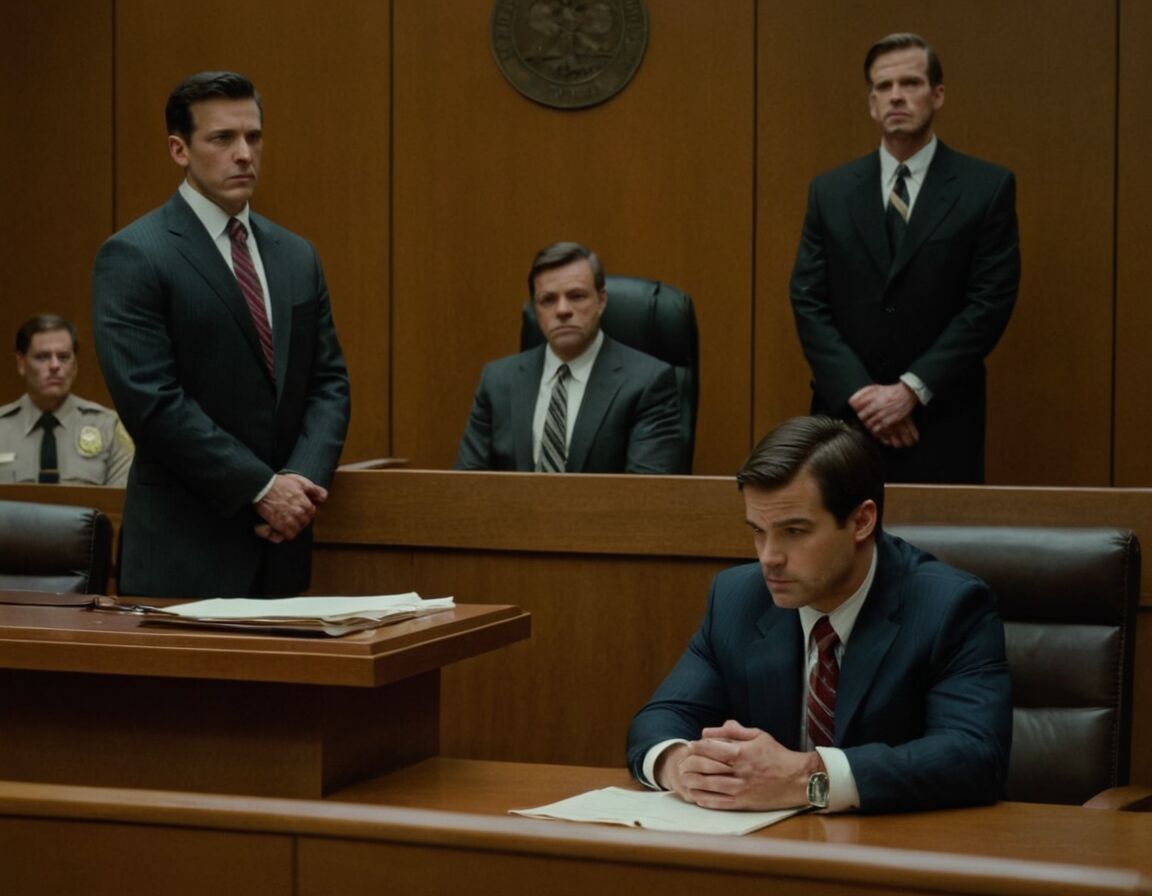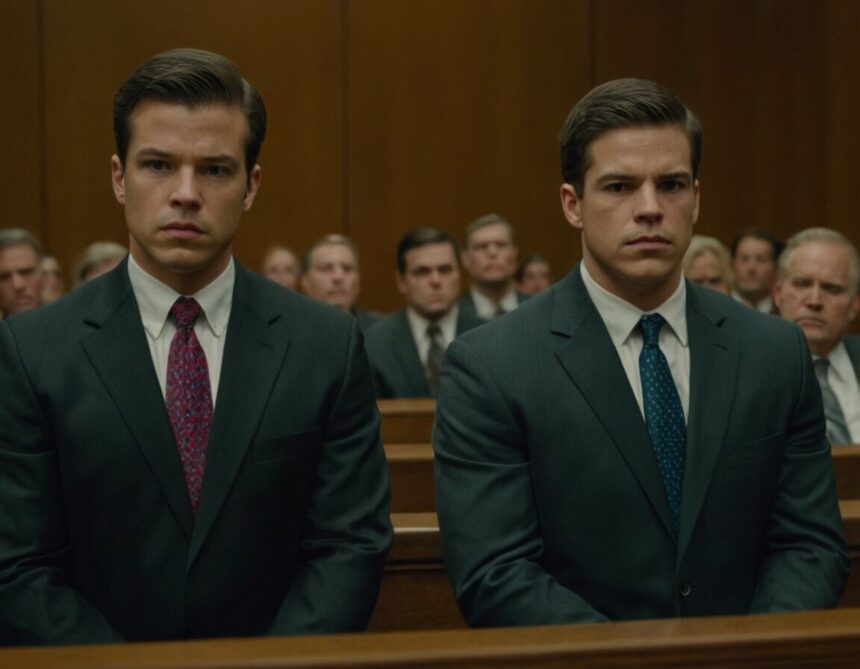The case of Lyle and Erik Menendez remains one of the most shocking criminal trials in recent history. Their story captivated the public and ignited intense media coverage due to the dramatic circumstances surrounding the murders of their parents, Jose and Mary Menendez. This deeply unsettling event prompted widespread debate about motives, influence of upbringing, and the nature of justice itself.
Throughout the trial, both the prosecution and the defense presented compelling arguments, revealing complex layers of family dynamics, allegations of abuse, and questions about mental health. The brothers’ journey through the legal process ultimately led to a verdict that continues to resonate within the realm of criminal justice. Exploring this case offers insight into the intricate factors that shape such notorious criminal proceedings.
Kluczowe wnioski
- The Menendez brothers, Lyle and Erik, murdered their parents in 1989 due to alleged long-term abuse.
- Key evidence included forensic blood analysis, financial motives, and surveillance footage linking the brothers to the crime scene.
- The defense claimed childhood emotional and physical abuse impaired the brothers’ mental health and decision-making.
- The prosecution argued that financial gain and family conflicts motivated the murders, leading to their conviction.
- Both brothers are serving life sentences without parole, with the case raising questions on the influence of upbringing on crime.
Background of the Menendez brothers’ childhood
The childhood of Lyle and Erik Menendez was marked by an environment that many described as troubled and complex. Both brothers grew up in a wealthy household, which provided them with material comforts, but reports indicate that they experienced a turbulent family life. Their father, Jose Menendez, was a prominent entertainment executive, known for his authoritative disciplinary style, which is believed to have contributed to a strained emotional atmosphere at home.
Throughout their early years, the brothers reportedly endured various forms of psychological and physical abuse. These experiences, combined with their parents’ strict control and high expectations, created a tense environment that seemed to foster underlying resentment. It has been suggested that these childhood hardships played a significant role in shaping their later actions and perceptions of justice.
In addition to familial difficulties, both Lyle and Erik faced challenges in social relationships and development during adolescence. Despite their affluent upbringing, there are accounts indicating feelings of alienation and emotional distress. The combination of these factors contributed to a complex psychological background that both shaped their personalities and influenced subsequent events in their lives.
Zobacz także: Exploring the Life and Work of Imogen Faith Reid: A Rising Star in Contemporary Art
The murders of Jose and Mary Menendez

On August 20, 1989, Jose and Mary Menendez were tragically murdered in their Beverly Hills home. The crime shocked the local community and made headlines nationally due to the brutality of the act and the prominence of the family involved. The brothers, Lyle and Erik, later confessed to having carried out the killings, which they claimed resulted from years of emotional and physical abuse suffered at the hands of their father.
The murders took place in a setting where wealth and social stature seemed to offer privilege, but underneath was a turbulent atmosphere filled with resentment and anger. Jose Menendez was a high-powered entertainment executive with strict disciplinary methods, behaviors that reportedly contributed to tensions within the household. The murder weapon, a shotgun, was discovered at the scene, and disturbing scenes indicated a violent struggle had occurred.
This event marked the beginning of an intense legal process. Evidence collected by investigators, including testimonies and forensic data, painted a detailed picture of the circumstances leading to the killings. The case drew enormous media attention, as questions arose about the motives behind such a drastic act. Ultimately, the murders served as a catalyst for the brothers’ trial, revealing a complex web of family dynamics and unresolved conflicts.
Key evidence presented during the trial
- One of the most crucial pieces of evidence was the forensic analysis of the crime scene, which revealed extensive blood spatter patterns indicating a violent struggle. The shotgun used in the murders was recovered and matched through ballistics tests to shells found at the scene, establishing a clear link to the weapon.
- Moreover, financial records played a significant role, as investigators uncovered substantial life insurance policies taken out by the brothers shortly before the murders. These documents were presented as part of the prosecution’s argument suggesting a possible financial motive.
- Tests on fibers and hair samples linked the brothers to their parents’ house, and additional CCTV footage showed Erik Menendez near his family residence around the time of the killings. Witness testimonies also described conflicts and repressed tensions within the household that supported claims of longstanding abuse.
- Phone records further demonstrated communications between the brothers and their lawyers in the days surrounding the murder dates, hinting at premeditation.
- Altogether, these evidences painted a comprehensive picture of planning and intent, solidifying the prosecutors’ case against Lyle and Erik Menendez.
The truth is rarely pure and never simple. – Oscar Wilde
Defense strategies and claims of abuse
During the trial, the defense teams for Lyle and Erik Menendez presented a series of claims centered around years of emotional and physical abuse inflicted by their father, Jose Menendez. They argued that this abusive environment had significantly impacted the brothers’ mental state, impairing their ability to make rational decisions at the time of the murders. The attorneys emphasized that high levels of stress, combined with trauma experienced during childhood, contributed to impulsive behaviors rather than premeditated intent.
To support these assertions, the defense called witnesses who provided testimonies about alleged abuse and neglect within the family. These accounts described frequent episodes of violence, emotional manipulation, and punishment that went beyond disciplinary measures. The aim was to establish that the brothers operated under extreme psychological distress, which diminished their capacity to control their actions or foresee the full consequences of such violent acts.
Furthermore, mental health experts were brought in to testify regarding the brothers’ psychological well-being. Some specialists diagnosed them with conditions that could influence their behavior, attempting to introduce an argument for temporary insanity or diminished responsibility. This approach sought to challenge the prosecution’s portrayal of the case as a cold-blooded killing, instead framing it as a tragedy rooted in a deeply troubled upbringing that shaped their responses to conflicts within their family.
Dodatkowe zasoby: Exploring Unblocked Games 6x: The Ultimate Resource for Online Gaming Enthusiasts
| Aspekt | Opis |
|---|---|
| Background of Childhood | The brothers grew up in a wealthy but troubled environment with reports of psychological and physical abuse by their father, Jose Menendez. |
| The Murders | Jose and Mary Menendez were murdered in 1989; the brothers later confessed, citing abuse as a motive. |
| Key Evidence | Blood spatter analysis, financial records, fiber and hair samples, and surveillance footage linked the brothers to the crime. |
| Defense Claims | The defense argued that years of abuse affected the brothers’ mental health, leading to impulsive actions. |
| Trial Outcome | The brothers were convicted, and their case raised questions about the influence of upbringing on criminal behavior. |
Prosecution’s case and motive

The prosecution built a compelling case by emphasizing financial motives as a key reason behind the murders. Evidence such as substantial life insurance policies taken out shortly before the crime suggested that the brothers might have been driven by the prospect of financial gain. This was paired with forensic data, including ballistics testing, which linked the shotgun used in the killings directly to the evidence recovered at the scene.
Furthermore, investigators uncovered phone records indicating communications between Lyle and Erik and their lawyers during the days surrounding the murders, pointing to premeditation. Witness testimonies also detailed growing tensions within the family, with several accounts hinting at conflicts and grievances that had accumulated over time. Behavioral patterns observed in the brothers through surveillance footage and their actions after the crimes illustrated a level of planning that persisted beyond impulsive acts.
The combination of physical evidence, financial documents, and witness statements helped establish a narrative of intentionality. The prosecutors argued convincingly that these elements pointed towards a deliberate plan, revealing a complex web of motives intertwined with familial disputes and material interests. This formed the core basis for the charges and ultimately contributed to the conviction of both brothers.
Szczegółowe informacje: The Ultimate Guide to Curtain Bangs: How to Choose and Style Them for Your Face Shape
Courtroom dynamics and jury deliberation

The courtroom during the trial was marked by intense interactions between the prosecution, defense, and the jury. The atmosphere was charged with anticipation as each side presented their case, aiming to sway the jury’s opinion through compelling evidence and persuasive arguments.
Jurors were tasked with meticulously evaluating the extensive collection of physical evidence, witness testimonies, and expert opinions. Their deliberations involved weighing the credibility of the witnesses against the strength of the forensic data and the motives proposed. Throughout these discussions, the jurors faced the challenge of balancing emotional appeals with factual analysis to determine guilt or innocence.
Throughout the process, deliberation sessions often revealed differing viewpoints, requiring careful negotiation and consideration of all aspects of the case. Jurors had to interpret nuanced legal instructions from the court while maintaining focus on the core elements: intent, premeditation, and motive. The complexity of family dynamics and corroborative evidence played a vital role in shaping their conclusions.
Ultimately, the jury reached a verdict that reflected their collective judgment based on the information provided during the trial. Their decision carried significant weight, emphasizing how critical comprehensive evaluation and impartiality are within judicial proceedings.
Sentencing and public reactions
Following their conviction, Lyle and Erik Menendez faced rigorous sentencing that drew widespread attention. Both brothers were sentenced to life imprisonment without the possibility of parole, a punishment that reflected the gravity of their actions and the evidence presented during the trial. The sentences sparked varied reactions from the public, with many feeling justice had been served given the brutal nature of the murders and the extensive evidence supporting guilt.
Public opinion was deeply divided; some believed the brothers’ upbringing and allegations of abuse warranted leniency or alternative treatment, while others argued that personal circumstances should not diminish accountability for such severe crimes. Media coverage intensified these debates, fueling discussions about whether the punishment resonated appropriately with societal standards for justice.
The case also prompted reflection on the influence of childhood trauma on behavior, and highlighted ongoing concerns related to mental health in criminal proceedings. Ultimately, the verdict and sentences left a lasting mark on public consciousness, elevating conversations about familial violence, morality, and the role of environment in criminal acts.
Impact on legal and criminal justice systems
The case of Lyle and Erik Menendez has left a lasting impact on how the legal system approaches serious crimes involving complex family backgrounds. Their trial highlighted the importance of thoroughly examining evidence and understanding psychological factors that might influence behavior. It demonstrated that courts must carefully weigh emotional abuse claims alongside concrete forensic data, which can significantly affect verdicts.
Furthermore, this case exposed the necessity for prosecutors and defense teams to articulate arguments that consider both motive and mitigating circumstances. It underscored that judicial processes should recognize the influence childhood trauma could have on actions without compromising justice. The notoriety of the case also prompted revisions in courtroom procedures, especially regarding the presentation of mental health evaluations and expert testimonies, to ensure fairness and clarity during high-profile trials.
Additionally, the widespread media coverage and public interest underlined the need for obtaining impartial judgments free from external influences. Ultimately, the Menendez trial contributed to evolving standards in criminal proceedings — emphasizing careful assessment of psychological histories, meticulous evaluation of physical evidence, and the critical role of jury deliberation — all aiming to uphold integrity within the legal system.
FAQ: Odpowiedzi na pytania
Were Lyle and Erik Menendez ever released from prison?
Did the case of the Menendez brothers lead to any changes in legal procedures?
Were there any alternative theories about the murders besides the brothers’ involvement?
What impact did the Menendez brothers’ case have on awareness of childhood abuse?
Are there any films or documentaries based on the Menendez brothers’ case?
Referencje:










